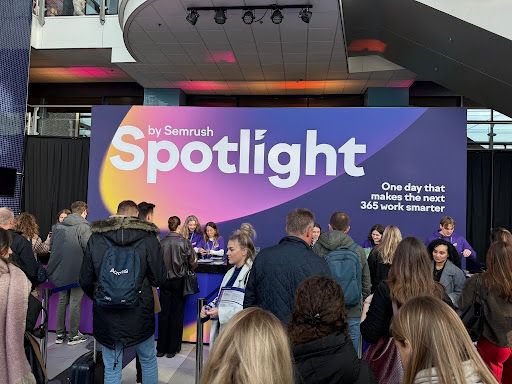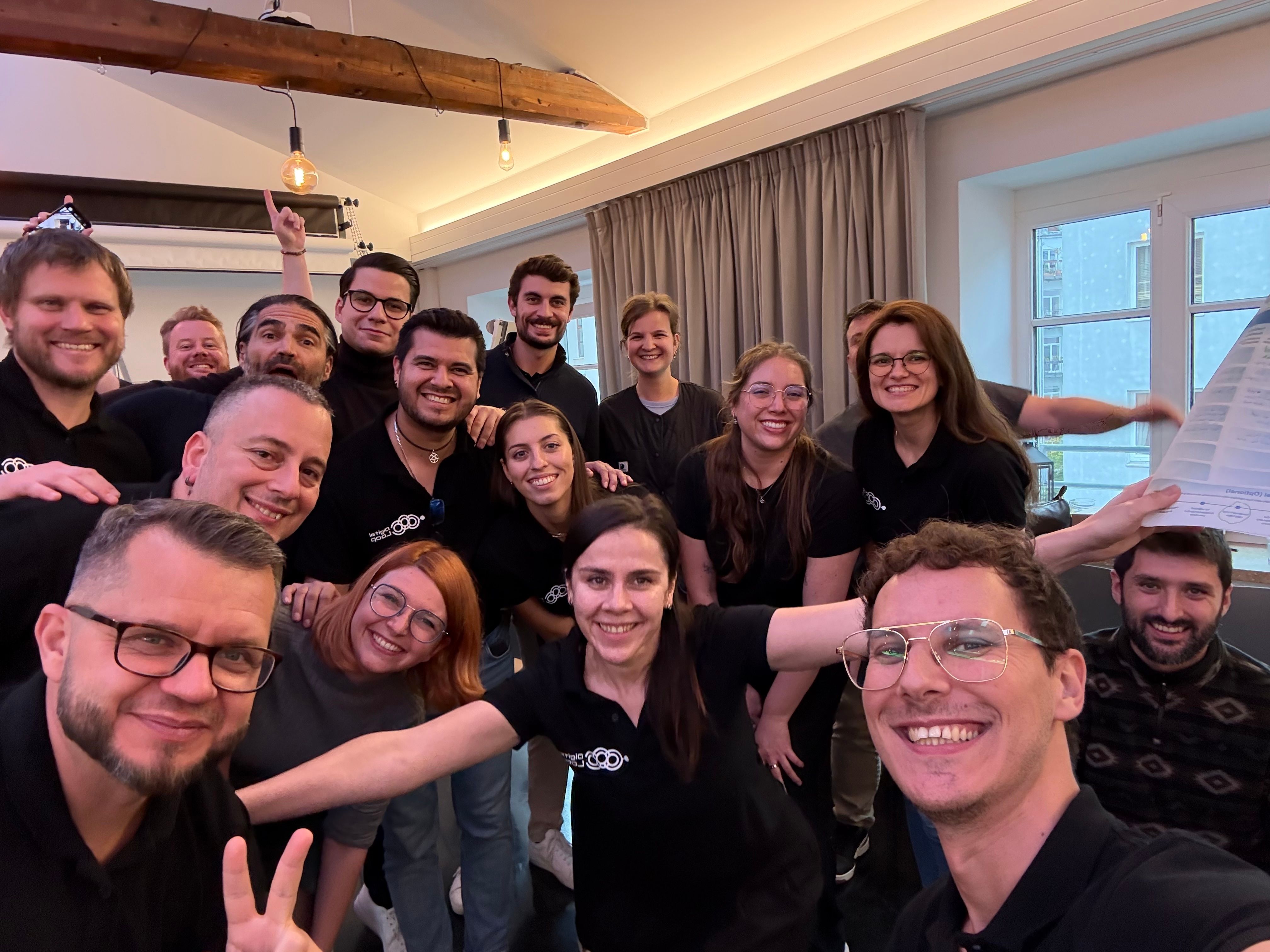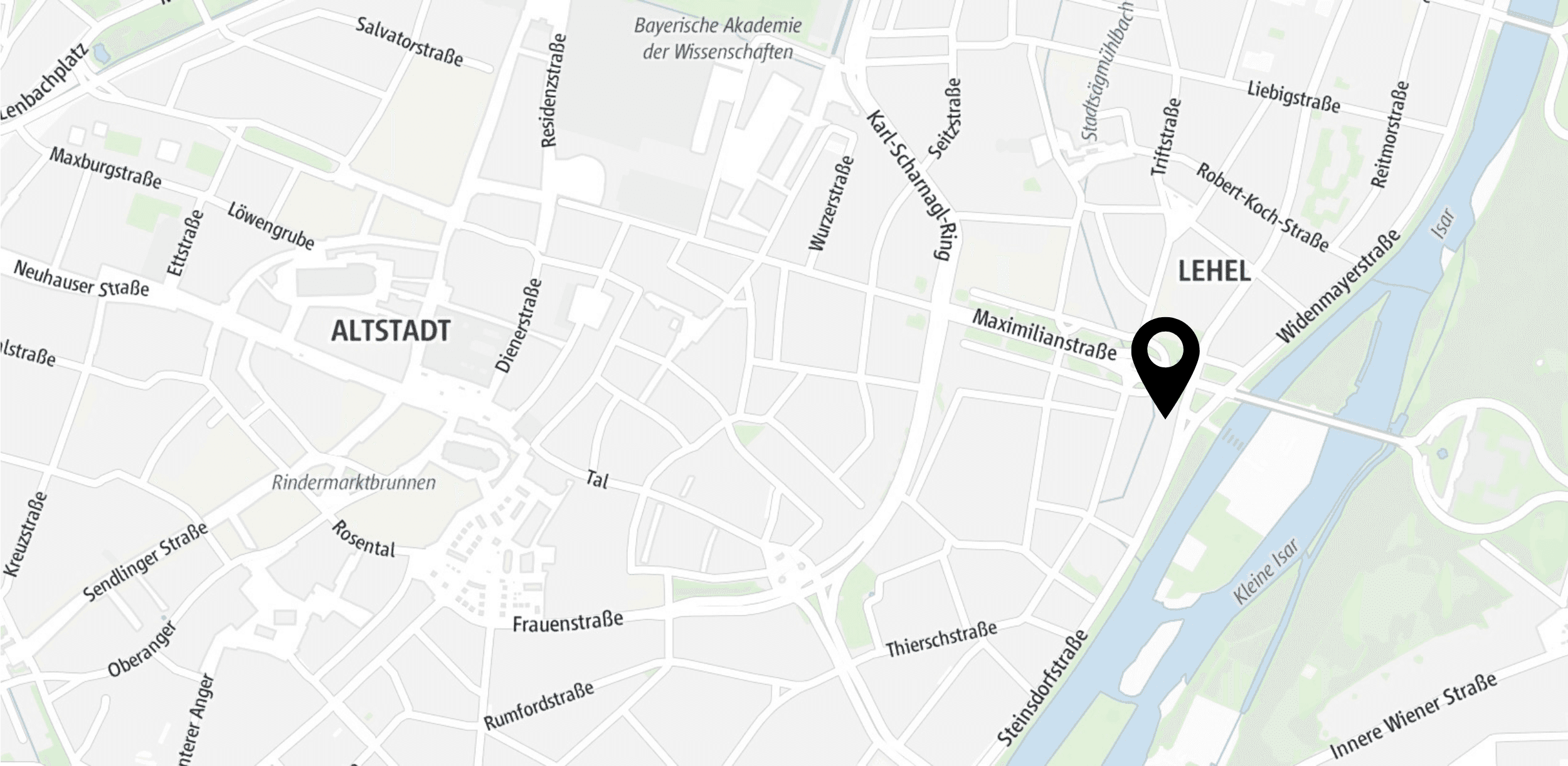Google’s AI Overviews (AIO) have thrown a serious curveball into the world of search. Companies across industries are seeing their click-through rates (CTR) drop by as much as 30%.
At first glance, that looks like thousands of lost clicks, fewer leads in the pipeline, and even entire revenue streams taking a hit. But… is that really the case?
In my previous article, I explained how to approach the new reality with AI Overviews. To pause and realize that nothing has significantly changed, you can first read the article "From AIO Chaos to GAIO Strategy", which outlines well-known approaches to dealing with AI Overviews.
Nevertheless, at Digital Loop, we weren’t content to sit back and shrug. We wanted answers. So we turned to our custom-built AIO measurement tool that tracks AIO and launched a deep dive into what really drives visibility in these mysterious AI-generated results.
For our dataset, we selected the 30 top-performing URLs across 1,000 tracked keywords and examined them from every possible angle. We compared their content, Core Web Vitals, rankings, backlinks, domain authority, traffic, intent, and more…
Now, the results might be interesting for all people involved in digital marketing. That means whether you are a small business owner wondering why your site isn’t getting the love it used to from Google…, or maybe a seasoned SEO pro trying to reverse-engineer what it takes to show up in AIO…, or perhaps a CMO or digital strategist watching your traffic reports slide and asking, “What on earth do we do next?”... Whoever you are, if you care about where the future of search is heading, I invite you to sit back and spill the tea about what we found examining AIO.
Methodology
So, how did we actually pull this off? We built this study on data, sweat, and a little bit of nerdy obsession.
We took a close look at the 30 top-performing URLs that appeared most often in AI Overviews across our 1,000 tracked keywords. These were the crème de la crème, the pages Google seemed to love enough to cite again and again. We observed them over a period of four weeks.
To crunch the numbers, we leaned on a mix of tools and brainpower:
- Ahrefs (https://ahrefs.com/ ) gave us the inside scoop on backlinks, domain ratings, keywords, traffic, and all the other features this powerful tool offers.
- PageSpeed Insights (https://pagespeed.web.dev/) together with CrUX data (https://developer.chrome.com/docs/crux/dashboard) gave us a clear view of Core Web Vitals and page performance. These checks showed which pages and domains were passing CWV (and which weren’t) and which delivered better performance.
- Of course, we also used LLMs like Gemini (Gemini 2.5 family https://gemini.google.com/ ) and OpenAI ChatGPT (https://chatgpt.com/ ) to uncover insights and spot hidden gems in the datasets.
To be honest, we continuously double-checked everything since LLMs tended to hallucinate on large datasets. This is not a scientific claim, but rather our own observation that Gemini hallucinated a bit less on big datasets than OpenAI’s ChatGPT.
- And yes, we did some manual checks too.
Sometimes the only way to catch oddities is to roll up your sleeves and get your hands dirty.
Well, since I started talking about difficulties, I want to emphasize some challenges we faced. Let’s be transparent here—no study is perfect. We hit a few bumps:
- Some URLs were dead ends (403s) for SEO tools, so we couldn’t get usable data from them. Meanwhile, these same URLs were successfully cited by AIO.
- Among the top cited URLs in AIO were… PDF files. Interesting fact, right?
To me, this is a finding in itself: Google AIO actually cites PDF content.
However, we didn’t include them in our estimations, and because this dataset was built around non-branded queries, the traffic and intent naturally leaned toward more generic, informational searches.
So, what you’re about to see isn’t the ultimate truth carved in stone. It’s a slice of reality—a carefully chosen, highly relevant dataset that tells a compelling story about what does (and doesn’t) matter in AI Overviews right now.
Findings by Category
Now for the juicy part—the findings. This is where numbers meet narrative and where we start to see what really drives presence (or doesn’t) in AI Overviews.
We sliced and diced the dataset across multiple dimensions, and here’s what stood out.
AI Content Level
When we looked at the content itself, we expected to see a clear difference between AI-generated and human-written text. But guess what? That wasn’t the case.
Our analysis showed an almost equal number of AI-generated signals and human-authored signals across the dataset. And here’s the kicker: both showed up in AIO at the same rate.
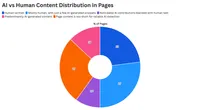
Takeaway: The machines haven’t taken over just yet. What matters most isn’t whether content is written by a human or AI—it’s the quality, depth, and usefulness of that content. If it helps answer a query well, Google seems happy to surface it in AIO, no matter who (or what) wrote it.
Core Web Vitals (CWV)
This one was surprising: We found that 47% of the analyzed URLs passed CWV and 63% of the domains passed overall. Pages with poor CWV still appeared in AIO, while some perfectly optimized ones didn’t.
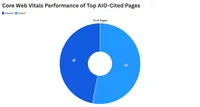
Takeaway: CWV isn’t the ticket to AIO visibility. But before you go ignoring it, remember that CWV still massively impacts user experience(UX), engagement, and conversions. So, while it might not be the lever for AIO, it’s still critical for business outcomes.
Top Pages Position
Here’s where things got interesting. The URLs most cited in AIO also happened to be their websites’ top-performing pages. On average, they drove about 6.5% of their sites’ total traffic.
Takeaway: Google isn’t pulling random pages into AIO. It’s leaning on already strong performers. If a page is doing well in the SERPs and pulling in meaningful traffic, it has a much better chance of making it into AIO.
Backlinks & Domain Rating (DR)
We crunched the link data, expecting backlinks to play a starring role. But the numbers told a different story. 43% percent of the most cited URLs in AIO had fewer than two backlinks.
Backlink Count by URL
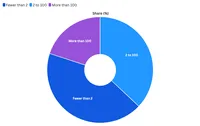
So what explains their visibility? Most likely domain authority (Ahrefs metric). The average DR of these URLs was 69.3—a strong signal that trusted domains carry more weight in AIO than individual backlink profiles.
Takeaway: Don’t obsess over building backlinks for every single page. Focus instead on strengthening domain-wide authority. Google seems to trust the house more than the furniture.
Keywords & Traffic
If you’re wondering whether keyword visibility matters, the answer is a resounding yes. On average, these AIO-cited pages ranked for 1,168 keywords and brought in around 10,484 visits (estimated by Ahrefs).
Takeaway: Visibility drives citations. Pages that cover more keywords and generate solid organic traffic are much more likely to show up in AIO. It’s proof that SERP strength translates directly into AIO presence.
Search Intent
When we broke down queries by intent, the numbers spoke loud and clear.
Traffic by Search Intent
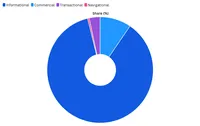
- Informational: 86.66%
- Commercial: 9.52%
- Transactional: 3.29%
- Navigational: 0.52%
This reinforces what we already suspected—AIO is all about informational queries.
Takeaway: If your goal is AIO visibility, invest heavily in informational content. But don’t ditch commercial and transactional entirely—those are still your bottom-funnel converters. The trick is balancing both, depending on your business goals.
Local vs. Non-Local
Finally, let’s talk local. Our dataset was built around non-local keywords, so the split came out heavily skewed: 97.8% non-local vs. just 2.2% local.
Takeaway: We can’t make sweeping claims about local SEO and AIO just yet. What this tells us is simple: we need a dedicated local-intent study to see how AIO handles queries like “near me” or city-specific searches.
Key Insights
Alright, let’s boil all of this down. After sifting through the numbers, patterns, and a few surprises, here are the three big truths that stood out loud and clear:
1. Page quality and domain authority matter more than backlinks or CWV.
Forget obsessing over whether one page has two backlinks or two hundred—Google clearly cares more about trusted domains and content that delivers real value. And while Core Web Vitals are great for UX, they don’t seem to move the needle much in AIO visibility.
2. Informational, high-traffic pages dominate AIO citations.
AIO is designed to answer questions. The pages that perform best are those addressing broad, informational queries that generate significant traffic. If your content exists only at the transactional end of the spectrum, you are missing valuable AIO opportunities.
3. Strong performers get stronger.
This one is simple but powerful: pages that already rank well in SERPs and pull traffic are more likely to be cited in AIO. In other words, AIO isn’t handing out participation trophies. It’s rewarding the top dogs that are already proving their worth in the organic game.
Strategic Recommendations
So what do we do with all this? Insights are great, but they don’t move the needle unless they’re paired with action. Based on our findings, here’s where we recommend putting your energy if you want to win in the world of AI Overviews:
1. Double down on informational content clusters.
AIO loves answering questions—so give it something to chew on. Build rich, well-structured clusters of informational content around the topics that matter to your audience. Think “educate first, convert later.”
2. Forget the authorship debate. Quality wins.
It doesn’t matter if your copy was drafted by ChatGPT, hand-crafted by a Pulitzer winner, or somewhere in between. What matters is whether the content is useful, relevant, and high-quality. Stop worrying about the label and start focusing on the output.
3. Build authority, not just backlinks.
Yes, links still matter—but at the domain level, not the one-off page. Invest in strategies that boost your domain authority, because trusted sites are far more likely to be cited in AIO, even if an individual page has barely any links.
4. Optimize and elevate your top performers.
Don’t spread yourself too thin. Look at the pages that are already pulling rankings and traffic, and make them even stronger. These are your best candidates for AIO visibility.
5. Balance with bottom-funnel content.
Informational queries might get you into AIO, but commercial and transactional content still pays the bills. If conversions are your goal, you’ll need to play both sides: visibility up top, revenue down below.
6. Explore local intent separately.
Our dataset leaned heavily on non-local, so we couldn’t crack that nut just yet. If local SEO is important for your business, run a dedicated study to see how AIO behaves with city-level and “near me” searches.






